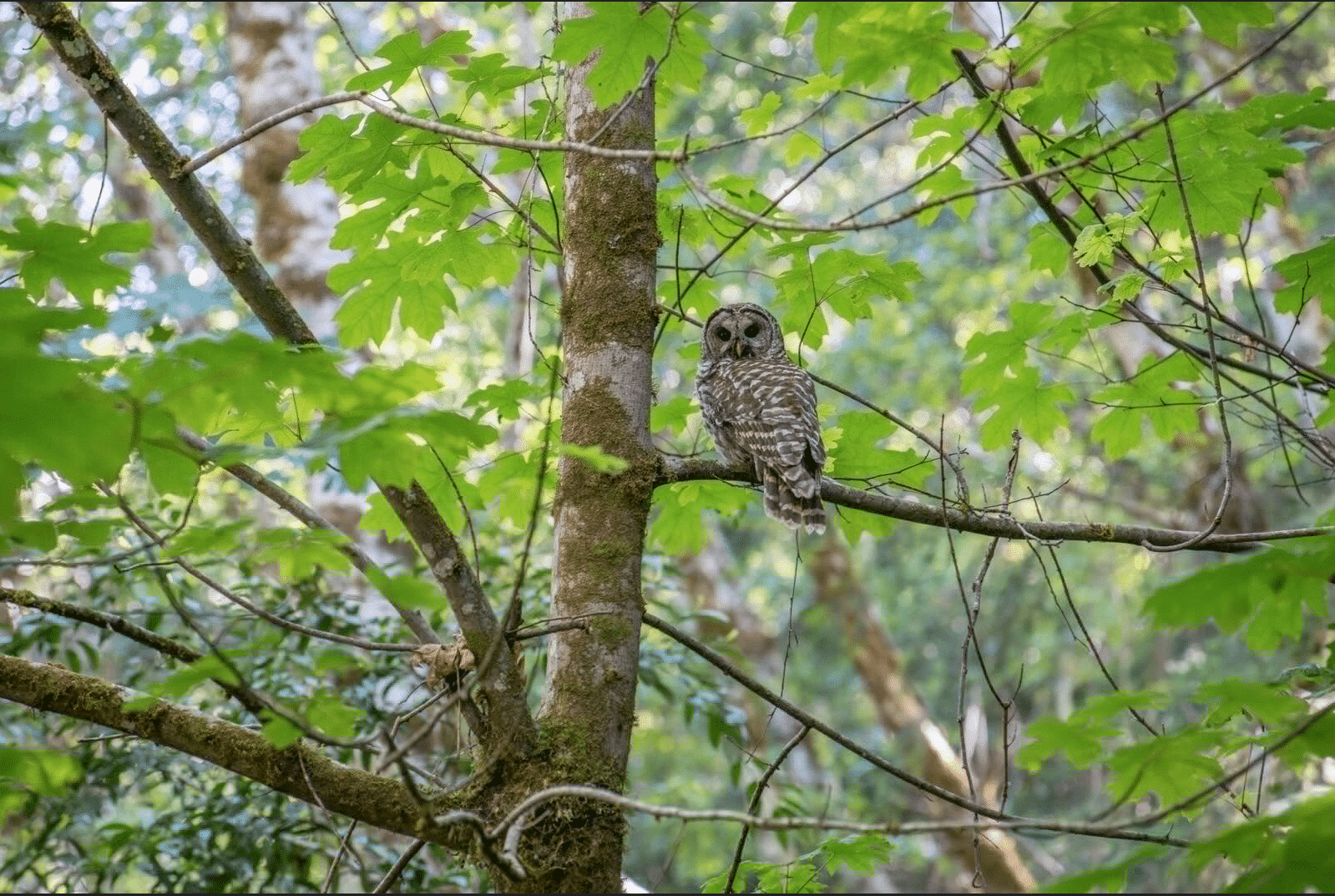Giving a Hoot about Northern Spotted Owls
About
Northern spotted owl populations are declining in the Pacific Northwest region of the United States due to habitat loss and competition from other owl species. The owls live in forests with old-growth conditions, such as areas with varied-aged trees and multi-layered canopies, therefore maintaining such forest areas is critical to their survival. Government regulation and environmentally conscious forestry practices can lead to improved habitat outcomes for the owls.
Key Initiative
As part of an acquisition in the region, New Forests studied forest characteristics to better understand the local northern spotted owl population and habitat. The survey identified the presence of foraging and nesting habitat on the property, as well as significant critical owl habitat on adjacent federal lands. The team built these considerations into a detailed harvest model that was used to develop a management plan that protects owl habitat. While identification of threatened and endangered species on a potential investment site may be viewed a material risk due to regulatory restrictions and oversight, New Forests believes that with responsible forest management practices the presence of such species can be viewed as a benefit. This is because the management can create positive biodiversity impacts by accounting for habitat and behavioural needs. New Forests uses forest modelling approaches to identify management regimes that optimise biodiversity conservation alongside other forest management objectives.
Impact
The spotted owl planning approach showcases how New Forests commits to biodiversity best practices throughout the investment process to encourage better outcomes for vulnerable species.



